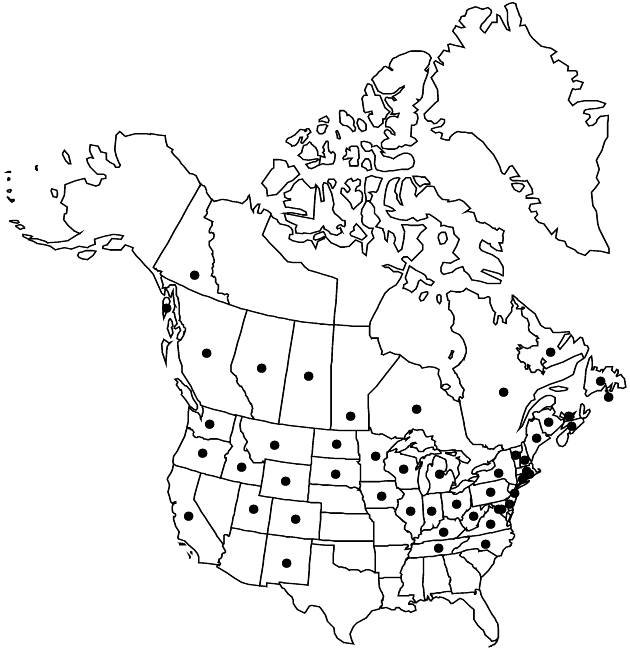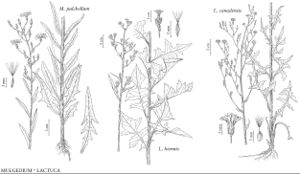Lactuca biennis
Rhodora 42: 300. 1940.
Annuals or biennials, (15–)75–200(–300+) cm. Leaves on proximal 2/3–3/4 of each stem; blades of undivided cauline leaves ovate to lanceolate, margins entire or denticulate, midribs sometimes sparsely piloso-setose. Heads in paniculiform arrays. Involucres 7–12+ mm. Phyllaries usually reflexed in fruit. Florets (15–)20–30(–50+); corollas bluish or whitish, sometimes yellowish, seldom deliquescent. Cypselae: bodies brown (often mottled), ± compressed-ellipsoid, 4–5+ mm, beaks ± stout, 0.1–0.5+ mm, faces (4–)5–6-nerved; pappi ± fuscous, 4–6+ mm. 2n = 34.
Phenology: Flowering Jul–Oct.
Habitat: Swamps, stream banks, woods
Elevation: 900–1500 m
Distribution

St. Pierre and Miquelon, Alta., B.C., Man., N.B., Nfld. and Labr., N.S., Ont., P.E.I., Que., Sask., Yukon, Alaska, Calif., Colo., Conn., Del., D.C., Idaho, Ill., Ind., Iowa, Ky., Maine, Md., Mass., Mich., Minn., Mont., N.H., N.J., N.Mex., N.Y., N.C., N.Dak., Ohio, Oreg., Pa., R.I., S.Dak., Tenn., Utah, Vt., Va., Wash., W.Va., Wis., Wyo.
Discussion
The type of Lactuca terrae-novae Fernald is probably conspecific with that of L. biennis. The type of L. biennis may be conspecific with that of L. floridana.
Selected References
None.
